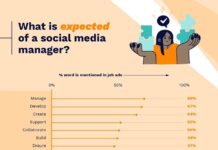As many of you know, we have recently changed our name from TWTRCON to The Realtime Report. Name changes and re-branding are always a challenging project. In the social media era, however, the challenges are exponentially greater.
First, the good news: the word has gotten out about our new name much faster than it would have done without the help of our fans and followers. Once we had redesigned and moved our site, changed the name on our Twitter account, and made a bunch of cool new cards for SXSW, we were well on our way. Or so we thought.
Fast forward to a week later, and the Modern Media HQ is a scene of chaos, hand-wringing and shattered illusions as we attempt to navigate the process of updating our identity across all of the various platforms that are home to Friends, Followers, Members or people otherwise Connected to the now-defunct TWTRCON brand. We’ve made plenty of mistakes, and the least we can do is share them so you don’t have to make the same ones.
The rules about changing your brand name are very different on each of the Big 3:
- Once you have more than 100 fans, Facebook doesn’t let you change the name of your Page. (Unless you are a major advertiser, in which case you might be able to get your ad rep to help out.)
- LinkedIn Groups clearly state you can only change your Group identity five times. What’s not clear, until you dig deep into the Help sections, is that this counts for both changing your Group name but also your Group logo. We now have a Realtime Report LinkedIn Group with no logo image and no way of fixing this … Oh, and LinkedIn Company pages do not allow you to change the name of your company.
- Twitter allows you to change your Twitter user name–provided the new one you like is available–and all other biographical information.
There’s more, but the bottom line is this: while the rules exist for a reason, they are inconsistent across the various platforms. Most importantly, they under-score one of the biggest challenges that brands face in the era of social media: by creating a community on a social network platform, you’re playing by their rules, and giving away control over your brand.
Lessons learned:
- Keep track of your brand. Create a master document that documents every platform on which your brand owns an account. Between Flickr, YouTube, blip.tv, etc., this can be a very long list very quickly.
- Start with your biggest community. Ours is on Twitter, so we spent a lot of time planning how to make that transition work smoothly. Now that we’re in trouble and will have to re-build communities on some of the other platforms, our Twitter followers can help us get the word out.
- Call in the experts. This may not be the time to go it alone, even if you have an experienced team in-house. We have a lot of experience on most of the major platforms, but we still made some big mistakes. If you’re a larger brand with a lot of LinkedIn Group member or Facebook Fans, you’ll want be very careful and work with someone who keeps up with the ever-changing array of features on those platforms.
- Read before you click. Most things have an undo button. But you don’t want to risk confusing your fan base or alienating LinkedIn Group members, so dig into the documentation before making changes that can’t be undone later. If you’re still not sure, Quora has quickly become a great source of inside information and advice.
- Keep a sense of humor. You’ll need it!
And stay tuned for more information on our new LinkedIn Group and Facebook Page …


